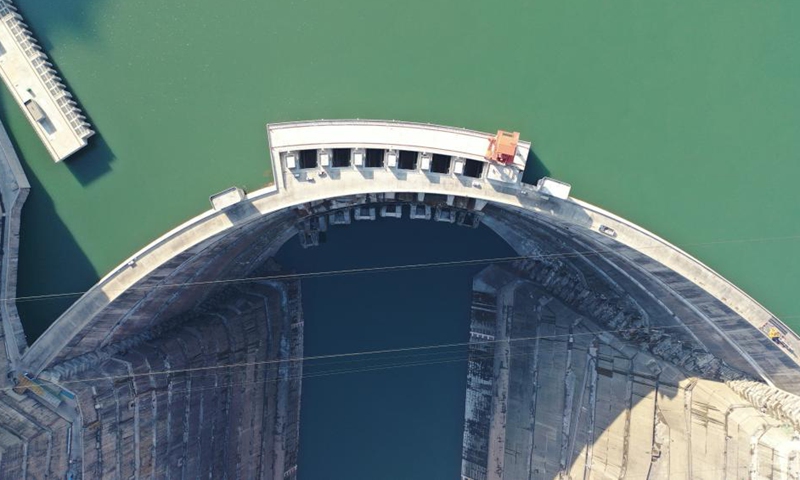
This aerial photo taken on Nov. 24, 2022 shows the Baihetan hydropower station, which straddles the provinces of Yunnan and Sichuan in southwest China. Its operation marked the completion of the world's largest clean energy corridor, where six mega hydropower stations on the Yangtze work to transmit electricity from the resource-rich west to energy-consuming regions in the east. (Xinhua/Xu Bingjie)
China has made significant progress in implementing the 102 key projects listed in its 14th Five-Year Plan (2021-2025), with notable achievements seen in sectors such as transportation infrastructure, energy systems and green development, the country's top economic planner has said.According to the National Development and Reform Commission (NDRC), the following are select highlights of the achievements the projects have seen over recent years:
-- The country's transportation infrastructure network has been strengthened, with about 95 percent of the country's expressway services areas now equipped with charging facilities. A total of 151 national logistics hubs have been included on a list of key construction projects issued by the commission in 2021, covering 31 provincial-level regions.
-- Amid China's efforts to build a modern energy system, the world's largest clean energy corridor has been built along the Yangtze River. China's total installed power generation capacity has exceeded 3 billion kilowatts, with installed wind and solar power generation capacities surpassing coal power.
-- China has made coordinated progress in urban and rural development since 2021. In that time, it has begun renovating about 195,000 old urban residential communities, and approximately 210,000 kilometers of old gas pipelines have been renovated in urban areas.
The aggregate length of China's rural roads was 4.6 million kilometers by the end of 2023. Tap water coverage in China's rural areas had reached 90 percent by the end of last year, and about 75 percent of China's rural households had access to sanitary toilets.
-- The country has made systematic efforts to promote green development, with protected natural areas now accounting for about 18 percent of China's total land area. Led by China's broader efforts to cut pollution in key sectors, about 80 percent of the national steel production capacity has seen an ultra-low carbon emissions upgrade.
